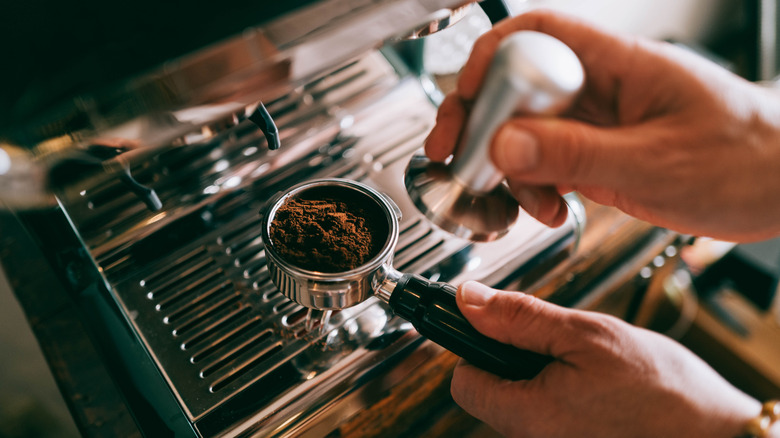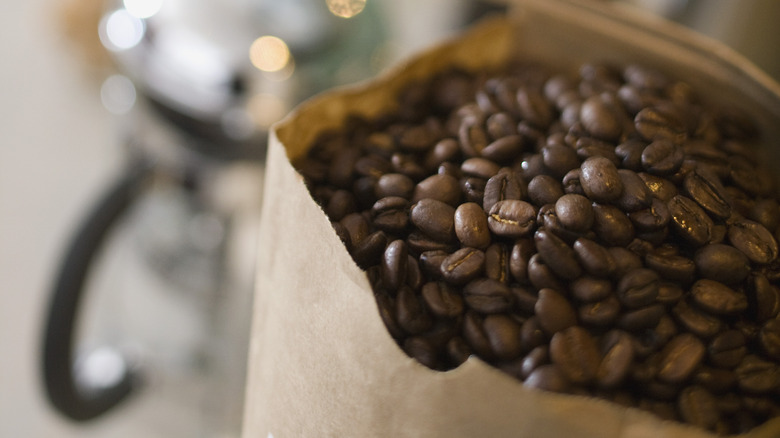A Splash Of Water Is The Secret To Better Ground Espresso Beans
While many people stop by Starbucks or a local coffee shop each morning to get their caffeine fix, others take their coffee far more seriously and choose to make it at home. Unfortunately, there are some common mistakes that everyone makes when making espresso at home, whether purchasing older beans or not storing them properly in an airtight container. However, figuring out the right grind settings for your beans can feel like a frustrating game of trial and error. Even once you have that perfect setting, you may find that your grounds are clumping together and your resulting espresso isn't quite right.
Interestingly, using a tiny bit of water on your beans before putting them into the grinder can prevent your coffee grounds from sticking together, resulting in a bold and delicious shot of espresso. In a study published in the journal Matter, researchers concluded that the static electricity produced when the coffee beans rub together can lead to the coffee grounds turning into clumps in the grinder. The study also found that coffee beans lose more moisture as the roasts become darker, which affects their electrical charge.
Adding water to whole coffee beans to prevent clumps after grinding allows the water to flow more seamlessly through all the grounds during brewing, rather than being forced through empty air pockets. Therefore, spritzing your beans beforehand allows that extra moisture to mitigate the clumping issue and gives the grounds a better brew.
Making perfect espresso is no simple task
While the study in Matter was published in December 2023, adding water to your espresso beans for the perfect grind is no new concept. Many coffee connoisseurs on TikTok have been spritzing their beans pre-grinding like it's second nature. This hack likely stemmed from the Ross Droplet Technique, which was coined in 2005 when David Ross shared the idea informally on a coffee forum. An alternative to the spray bottle method is to wet a spoon or your finger and use that to stir the espresso beans and distribute the water.
While using water to reduce coffee beans' electrical charge during grinding is backed by science, many at-home coffee lovers don't measure the water they use. This can cause results to vary since the ideal ratio is about half a millimeter or 2% water to the weight of coffee. Understandably, this can be hard to replicate perfectly, but the frustration of clumpy grounds and poor extractions shouldn't stop you from trying.
While one Reddit user complained that "gunk of damp grounds had built up" in their grinder after adding too much water to their beans, another user noted that the spray bottles release "hardly any water" and didn't seem to make a difference. Of course, making the perfect shot of espresso is no simple task, which is likely something your barista wishes you knew, but finding the sweet spot with your water ratio is rewarding and delicious.

